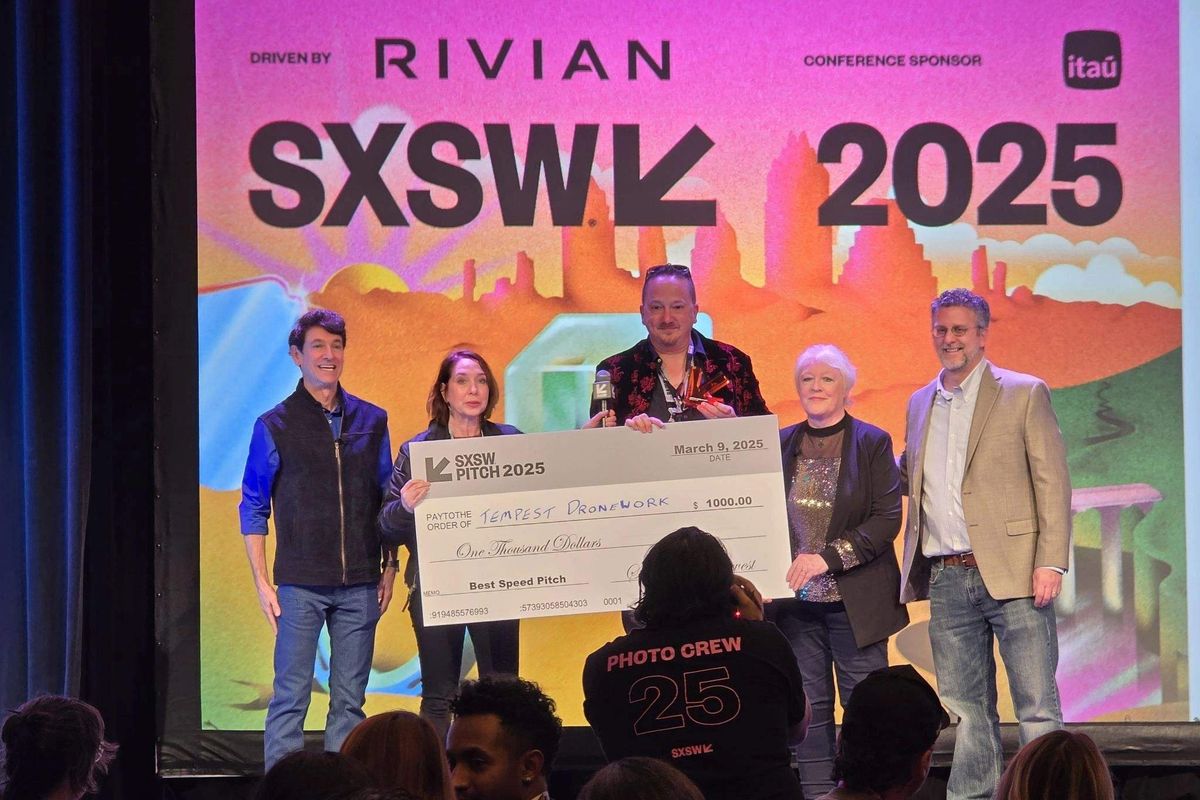6 Houston startups disrupting industries with innovative technology
meet the finalists
Houston is no stranger to technology that's shaping the future. As the longtime location of NASA Johnson Space Center to home base for new ventures disrupting industries with their technology, the Bayou City has had its finger on the pulse of what's new and next for decades.
The Deep Tech Business category in our 2025 Houston Innovation Awards will honor an innovative startup providing technology solutions based on substantial scientific or engineering challenges, including those in the AI, robotics and space sectors.
Six deep tech companies have been named finalists for the 2025 award. They range from a company developing predictive software to accelerate the energy transition to a new venture that's developing humanoid robots.
Read more about these businesses, their founders and their breakthrough technologies below. Then join us at the Houston Innovation Awards on Nov. 13 at Greentown Labs, when the winner will be unveiled.
Tickets are now on sale for this exclusive event celebrating Houston Innovation.
ARIX Technologies
Industrial and robotics company ARIX Technologies is an integrated robotics and data analytics company that delivers inspection services. Its ARIX VENUS robot combines aerospace-grade engineering, advanced non-destructive testing (NDT) and AI-powered analytics to detect hidden corrosion under insulation for the downstream energy, petrochemical, and chemical processing sectors.
ARIX was founded in 2017 by Dianna Liu, a former ExxonMobil engineer. Craig Mallory serves as CEO. The company reports that it is scaling deployments with major Gulf Coast refineries, expanding its analytics platform to include predictive corrosion modeling and growing a global partner program.
Little Place Labs
Space tech company Little Place Labs is developing an AI, machine-learning software across a network of satellites that can provide insights from space in under seven minutes.
The company was founded in 2022 by CEO Bosco Lai and CTO Gaurav Bajaj. The company recently received an award from the U.S. Space Force that will support it in deploying multiple applications and products onto more than 55 satellites over the next 36 months for both national security and commercial use cases. The company won the Security, GovTech & Space competition at the SXSW Pitch showcase last year.
Newfound Materials
Newfound Materials has developed a predictive synthesis software platform for accelerating the discovery of novel materials for critical energy applications, such as batteries, magnets, catalysts, and more. It guides users on the best experiments to try in the lab to optimize the synthesis of their materials.
Newfound Materials was founded in 2024 by CEO Matthew McDermott and participated in the inaugural Activate cohort. The company plans to release a public web app soon. It also has plans to raise a pre-seed or angel round.
Paladin Drones
Paladian develops drone-as-first-responder (DFR) systems for public safety. Its technology gives first responders live aerial video before teams arrive, enabling quicker decisions, better resource allocation and reduced false alarms.
The company was founded in 2018 by Divyaditya Shrivastava and participated in the Y Combinator accelerator that year. The company raised a $5.2 million seed round in 2024 and another round for an undisclosed amount earlier this year. In the future, it plans to expand its DFR deployments into more cities, offer new payload delivery capabilities (like delivering Narcan and life vests), and enhance deconfliction features.
Persona AI
Persona AI is building modularized humanoid robots that aim to deliver continuous, round-the-clock productivity and skilled labor for "dull, dirty, dangerous, and declining" jobs.
The company was founded by Houston entrepreneur Nicolaus Radford, who serves as CEO, along with CTO Jerry Pratt and COO Jide Akinyode. It raised eight figures in pre-seed funding this year and also expanded its operations at the Ion. The company is developing its prototype of a robot-welder for Hyundai's shipbuilding division, which it plans to unveil in 2026.
Tempest Droneworx
Tempest Droneworx provides real-time intelligence collected through drones, robots and sensors. Its Harbinger software platform shares data through a video game engine and aims to provide teams with early warning and insight to help them make decisions faster.
The company was founded in 2021 by CEO Ty Audronis and COO Dana Abramovitz. It participated in the Mass Challenge Air Force Labs and won the Best Speed Pitch at SXSW earlier this year. The company is currently raising a $2.5M seed round.
---
The Houston Innovation Awards program is sponsored by Houston City College Northwest, Houston Powder Coaters, FLIGHT by Yuengling, and more to be announced soon. For sponsorship opportunities, please contact sales@innovationmap.com.


 Ty Audronis, CEO and founder of Tempest Droneworx
Ty Audronis, CEO and founder of Tempest Droneworx Nicolaus Radford, founder and CEO of Nauticus RoboticsNicolaus Radford. Image via LinkedIn
Nicolaus Radford, founder and CEO of Nauticus RoboticsNicolaus Radford. Image via LinkedIn


 Dana Abramowitz and Ty Audronis co-founded Tempest Droneworks. Photo courtesy of Tempest Droneworx
Dana Abramowitz and Ty Audronis co-founded Tempest Droneworks. Photo courtesy of Tempest Droneworx